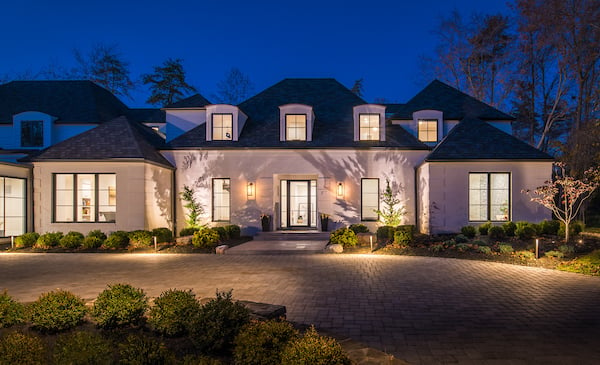Foundations Exposed: What Your Soil Isn’t Telling You
October 26th, 2025
4 min. read
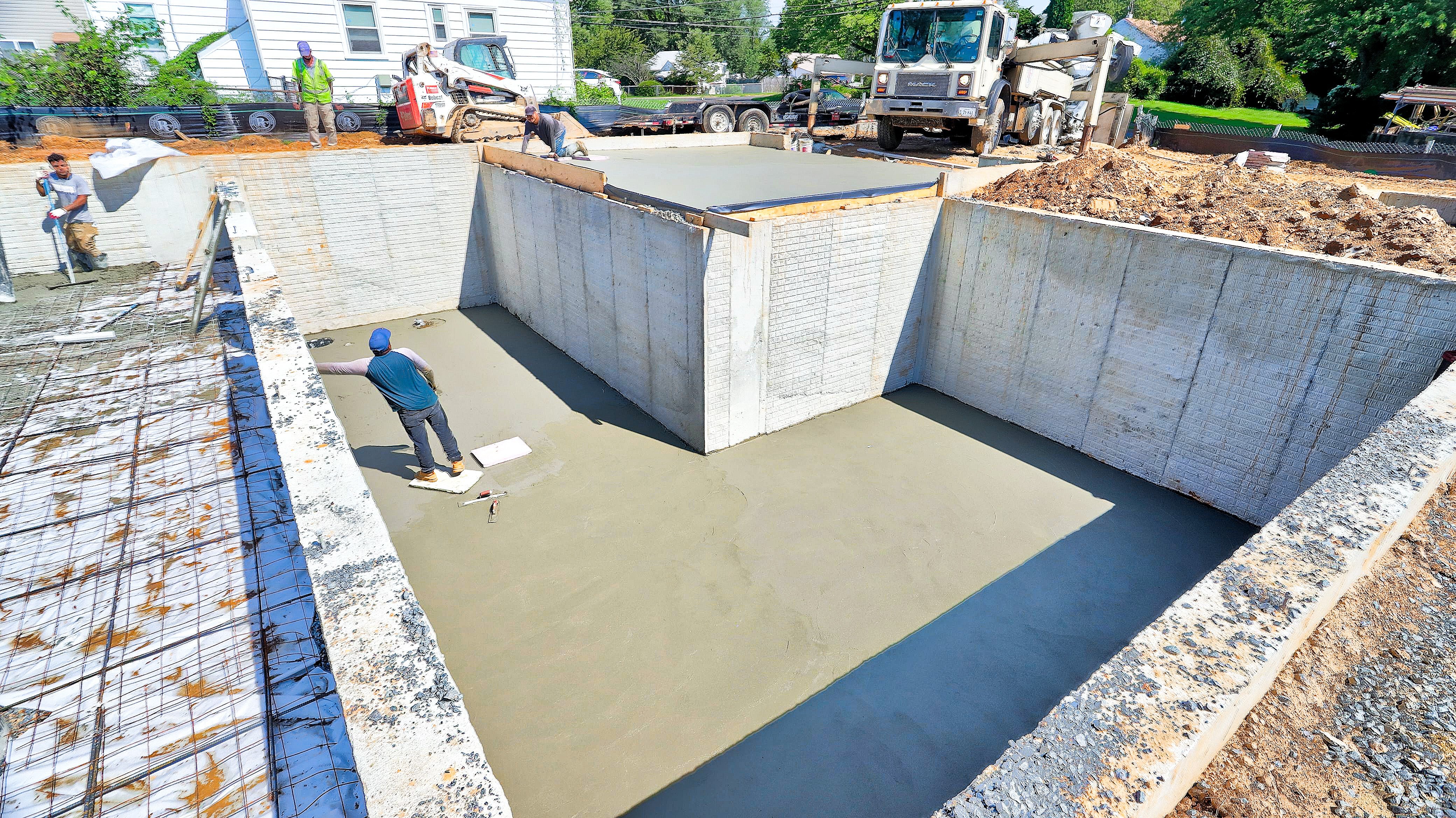
Building a custom home in Northern Virginia is more than choosing finishes or layout. The real strength of a home lies beneath the surface. Soil conditions affect stability, durability, and long-term performance. Ignoring soil characteristics can lead to cracks, uneven floors, and expensive repairs.
Experience matters. AV Architects + Builders has worked with Northern Virginia soils for decades. From clay-heavy lots to rocky ground, we know that foundations must be tailored to each property. Engineering precision combined with local expertise ensures your home stands firm for generations.
Think of soil like a mattress. Some are firm and steady, others shift or compress. Placing a house on the wrong “mattress” without proper engineering creates problems over time. Addressing soil conditions early saves years of frustration and expense.
By the end of this blog, you’ll understand why soil analysis matters, common Northern Virginia soil types, and how foundation choices adapt to them. These tips help you make informed decisions and ask the right questions before building.
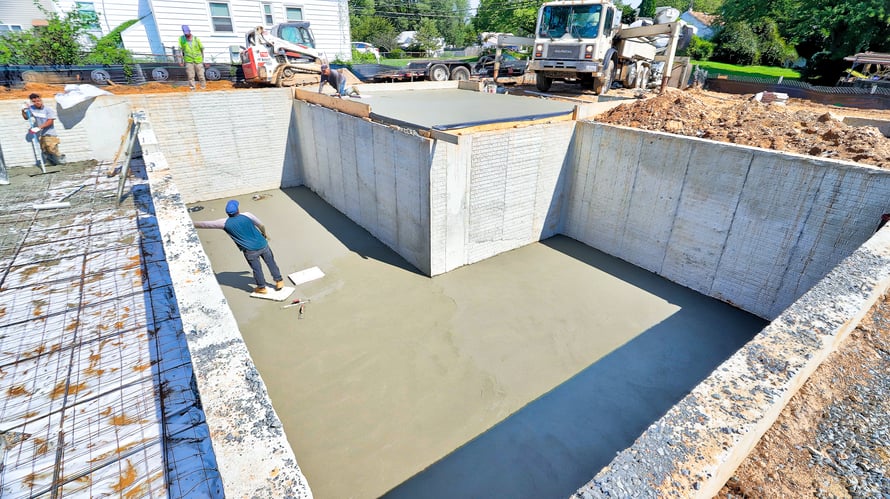 © 2025 AV Architects + Builders. All Rights Reserved
© 2025 AV Architects + Builders. All Rights Reserved
Understanding Northern Virginia Soil
The region has diverse soil types. Expansive clay swells when wet and shrinks when dry, sandy soil drains quickly but may shift under weight, rocky terrain requires excavation but offers stable support, and loam balances drainage and strength. Learning more about local soil conditions can guide your foundation planning and landscaping decisions.
What Happens During Soil Testing
Before a foundation is designed, a soil test evaluates how your land will support a home. Geotechnical engineers examine the soil’s composition, strength, drainage, and stability to predict how it will behave over time.
The process typically involves:
- Soil sampling: Taking samples from various depths to check for clay, sand, rock, or loam.
- Moisture content analysis: Determining how much water the soil holds, which affects expansion and contraction.
- Load-bearing tests: Measuring how much weight the soil can safely support, which informs foundation depth and design.
- Chemical testing: Identifying elements that could corrode concrete or steel, such as high acidity or salts.
Results from the soil test guide foundation choice, drainage planning, and long-term maintenance strategies. This step ensures the home is built on a stable base, reducing risks of cracks, settling, or water intrusion. For more details, explore how soil affects foundations.
Matching Foundation to Soil
Different soils require different approaches. Clay-heavy lots often need deep footings, piers, or reinforced slabs. Sandy soil works well with slab-on-grade foundations but needs compaction and reinforcement. Rocky terrain benefits from anchoring into bedrock. Loam supports most foundation types, provided drainage is addressed.
Designing the perfect foundation balances soil, home layout, and long-term performance. It considers structural load, drainage, and potential future expansions. A guide to foundation types provides a clear view of options and structural strategies.
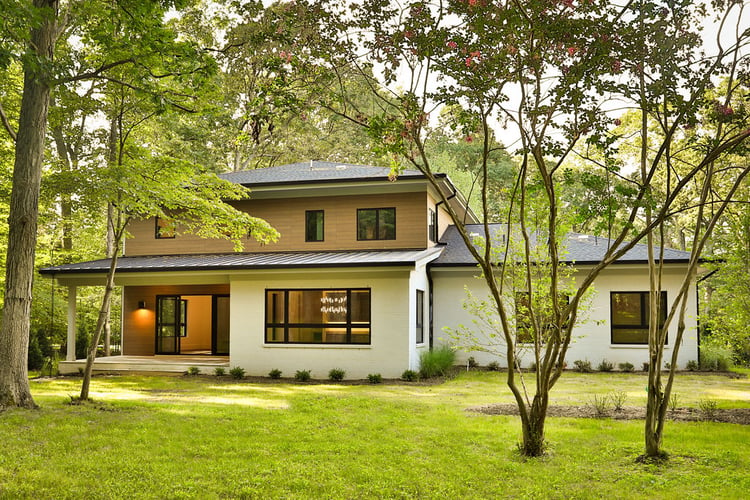 The Woodlands House, Great Falls, Virginia, AV Architects + Builders
The Woodlands House, Great Falls, Virginia, AV Architects + Builders
Understanding Water and Drainage
Water is one of the biggest threats to any foundation. Even the strongest foundation can be compromised if moisture is not managed properly. Homeowners should understand how water interacts with their lot and foundation to prevent long-term damage.
- Site grading ensures rainwater and runoff are directed away from the foundation, reducing erosion and soil movement.
- Gutters and downspouts channel water safely, ideally discharging 5 to 10 feet from the home.
- French drains, trench drains, and sump pumps help redirect excess water on lots with high water tables or poor natural drainage.
- Waterproofing basements and crawl spaces preserves structural integrity and prevents mold.
Learning more about water and drainage systems can help you make better planning decisions. Proper water management combines site preparation, functional systems, and ongoing maintenance, keeping your foundation stable and dry for decades.
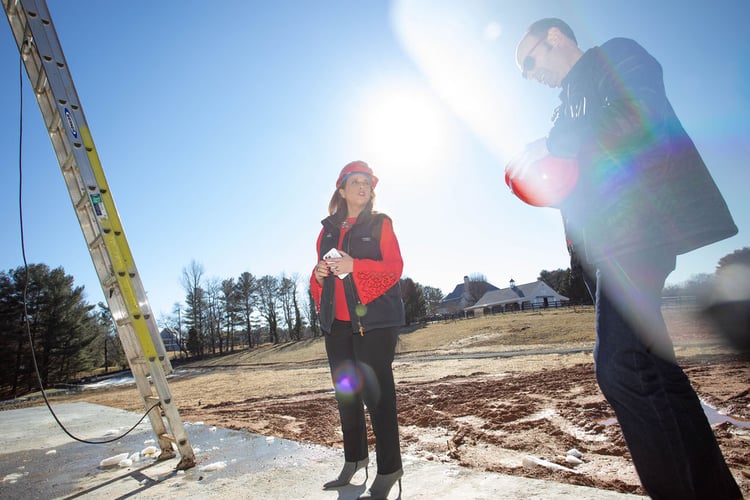
© 2025 AV Architects + Builders. All Rights Reserved
Plan Smart, Build Right
Mistakes in foundation design or water management can become costly quickly. Cracked walls, uneven floors, sticking doors, and basement leaks are just the start—repairs can easily reach tens of thousands of dollars, and ongoing structural issues can reduce your home’s value. The best way to avoid these problems is proactive planning. Prepare your lot, schedule soil testing, and share the results with your architect and builder so the foundation, drainage system, and overall design are tailored to the property. Insights on common mistakes in custom home building and lot preparation can guide these early steps. This upfront effort prevents surprises, reduces long-term maintenance, and creates a strong, stable home built to withstand environmental challenges.
Engineering a Home That Lasts
A lasting home comes from intentional engineering decisions:
- Test soil early.
- Match foundation to soil type.
- Plan proper drainage.
- Use durable materials like reinforced concrete and steel. Learn more about sustainable materials for modern homes to ensure longevity.
- Consider landscaping or additions that may affect soil stability, guided by custom home landscaping strategies.
Following these steps builds a home meant to last for generations.
Why Some Homes Last
Some homes remain strong for decades while others show problems within a few years. Longevity depends on several key factors: strong foundations, durable materials, effective water management, regular maintenance, and expert planning and design. Homes built with these factors in mind are not only beautiful but also built to last, providing safety, comfort, and lasting value. Additional home design features can further enhance durability and quality of life.
Building a Home to Last a Lifetime
A home that lasts is more than bricks and beams—it is the result of careful planning, precise engineering, and thoughtful adaptation to the land. By combining strong foundations, proper water management, durable materials, and expert design, your home becomes resilient to soil shifts, weather changes, and the test of time.
Northern Virginia soils vary from one neighborhood to the next. A lot that performs perfectly in one area may behave differently just a few miles away. That’s why local expertise is critical. A builder familiar with these conditions can anticipate challenges, design solutions tailored to the property, and prevent costly mistakes before construction begins.
With the right approach, your home doesn’t just survive—it thrives. Every structural decision, from foundation type to drainage system, reinforces durability while maintaining aesthetic and functional integrity. This combination of knowledge, skill, and attention to detail ensures your home is both beautiful and built to last, becoming a lasting legacy where memories are made and passed down for generations. Learn more by visiting our Learning Center or contacting us to start planning your custom home.

